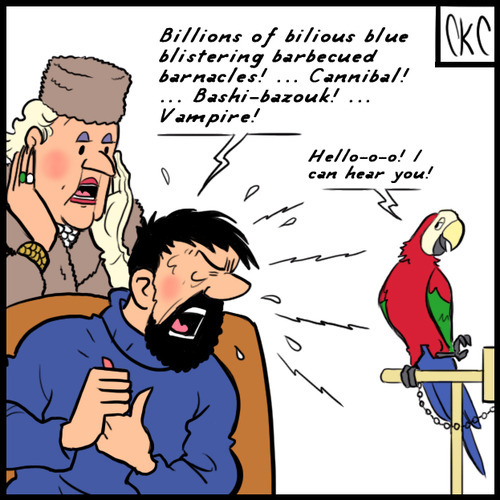
A story that really made an impression on me is The Castafiore Emerald, a comic book and one of Hergé’s Adventures of Tintin. The story concerns a weeken gathering at the house of Captain Haddock, Tintin’s pal who features in most all of the later adventures. Along the course of the book, many character’s we are now familiar with show up, and we spend a long time figuring out when the action happens.
Hergé’s works are all page turners, with a lot of attention paid to making the final panel of each two-page spread contain a seed of mystery or a big reaction to something we don’t yet understand, and it’s never been used better than in this book. Why? Because time and again, we think we are entering into the ‘point’ of the book, where the adventure begins, but it turns out to be just a minor moment of life – someone dropping a tray, or an annoying animal bothering someone. Gradually, a central mystery develops, but even that, in the end, turns out to be misleading.
Hergé plays with the form in a stupendous way. Is there a crime? Is there a villain? Can we enjoy the book if not?
And the first time I read it, the answer was: ‘No!’ I found the book disappointing as I was a kid who was after fisticuffs with bad guys and grand adventure. It stuck with me as the Tintin that didn’t. But it’s the one I come back to again and again, and marvel at what it achieves. The book survives on the characters and relationships – and to do that with minimal text and continuing within the style that had been so focused on adventure plots – is really great. In a way, it’s what Seinfeld always aimed for: a show about nothing.
(Posted this as part of the iversity course I’m doing on the Future of Storytelling).